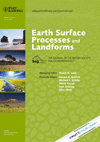
EARTH SURFACE PROCESSES AND LANDFORMS
Scope & Guideline
Advancing Knowledge in Earth’s Dynamic Landscapes
Introduction
Aims and Scopes
- Geomorphological Processes:
The journal emphasizes the study of landform development and the processes that shape the Earth's surface, including erosion, sedimentation, and mass wasting. - Human-Environment Interactions:
Research exploring how human activities impact geomorphological processes and landforms, including urbanization, agriculture, and natural resource extraction. - Climate Change Effects:
Focus on the impacts of climate change on geomorphological processes, including glacier retreat, changes in sediment transport dynamics, and altered hydrological regimes. - Innovative Methodologies:
Encouraging the use of advanced technologies such as remote sensing, UAVs, and machine learning for analyzing geomorphological processes. - Integrated Approaches:
Promoting interdisciplinary research that integrates geomorphology with hydrology, ecology, and climate science to address complex environmental issues.
Trending and Emerging
- Remote Sensing and UAV Applications:
There is a marked increase in the use of remote sensing and UAV technologies for monitoring and modeling geomorphological changes, enabling high-resolution spatial analysis. - Machine Learning in Geomorphology:
The application of machine learning techniques for data analysis and landform classification is emerging as a significant trend, providing new insights into geomorphological processes. - Climate Change Adaptation Studies:
Research focusing on adaptive strategies to mitigate the impacts of climate change on geomorphological systems is gaining prominence, addressing urgent environmental challenges. - Biogeomorphology:
The integration of biological processes in geomorphological studies is trending, exploring how vegetation and organisms influence landform development and stability. - Sediment Connectivity and Transport Dynamics:
There is an increasing emphasis on understanding sediment connectivity and its implications for landscape evolution and ecosystem health, reflecting a more holistic approach to geomorphology.
Declining or Waning
- Traditional Field Studies:
There has been a noticeable decrease in purely traditional field-based studies, possibly due to the increasing use of remote sensing and modeling techniques that offer broader spatial and temporal insights. - Focus on Classical Erosion Models:
Research centered around classical erosion models is becoming less frequent, as newer, more dynamic models that incorporate multiple interacting processes gain traction. - Static Landform Classification:
The emphasis on static landform classification systems is waning in favor of more dynamic approaches that consider temporal changes and the processes driving landform evolution. - Geomorphological Mapping without Technology:
There is a decline in publications that focus solely on manual geomorphological mapping, as automated and remote sensing techniques become more prevalent. - Single-Disciplinary Studies:
The journal is seeing fewer studies that do not integrate other disciplines, as interdisciplinary approaches are increasingly recognized as essential for addressing complex geomorphological questions.
Similar Journals
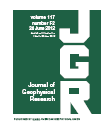
JOURNAL OF GEOPHYSICAL RESEARCH-EARTH SURFACE
Advancing Knowledge in Geophysical Research.JOURNAL OF GEOPHYSICAL RESEARCH-EARTH SURFACE, published by the American Geophysical Union, stands as a leading voice in the fields of Earth-Surface Processes and Geophysics. With an impressive impact factor placing it in the Q1 category for both disciplines, this journal offers invaluable insights and research findings that address critical challenges related to Earth's surface dynamics and processes. Since its inception in 2004, the journal has been dedicated to fostering a deeper understanding and interdisciplinary exploration of topics critical to environmental science, geology, and geophysics. Researchers and professionals in the field will find cutting-edge studies meticulously peer-reviewed to ensure high quality and relevance, making it an essential resource for academics, practitioners, and students alike. The journal's significant Scopus rankings — 25th out of 179 in Earth-Surface Processes and 26th out of 165 in Geophysics — underscore its influence and the rigor of its content, encouraging submission and engagement from leading scholars globally.

Frontiers of Earth Science
Advancing Knowledge in Earth and Planetary SciencesFrontiers of Earth Science is a prominent academic journal in the field of Earth and Planetary Sciences, published by Springer. With an ISSN of 2095-0195 and an E-ISSN of 2095-0209, this journal serves as a significant platform for researchers and professionals to disseminate their findings from 2007 to 2024. It is recognized for its impactful contributions within the category of Earth and Planetary Sciences, boasting a respected Q2 ranking in 2023. With a Scopus ranking of 64 out of 195, placing it in the 67th percentile, Frontiers of Earth Science continues to drive academic dialogue and innovation. The journal is dedicated to exploring a diverse range of topics, including geology, meteorology, and environmental science, and amplifying the understanding of Earth systems through rigorous research. Located in New York, USA, this journal embraces an Open Access model, ensuring that groundbreaking research is readily available to the global scientific community, thereby enhancing its accessibility and impact.
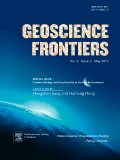
Geoscience Frontiers
Advancing Earth Sciences Through Open AccessGeoscience Frontiers is a premier open-access journal that has been at the forefront of disseminating impactful research in the field of Earth and Planetary Sciences since its inception in 2010. Published by China University of Geosciences, Beijing, this journal operates from the Netherlands and has gained recognition for its rigorous peer-review process and high standards of scholarship, earning a distinguished position as Q1 in the Earth and Planetary Sciences category. With a Scopus ranking of 5 out of 195, placing it in the 97th percentile, it reflects the journal's commitment to addressing global geological challenges and advancing our understanding of the Earth’s dynamic systems. As an open-access platform, Geoscience Frontiers ensures that vital research is widely accessible, fostering collaboration and innovation among researchers, professionals, and students alike. By providing a forum for cutting-edge discoveries and theories, the journal plays a critical role in shaping the future of geoscientific research and education.

Science China-Earth Sciences
Advancing Knowledge in Earth and Planetary Sciences.Science China-Earth Sciences, published by SCIENCE PRESS, stands as a leading journal in the field of Earth and Planetary Sciences, currently holding a prestigious Q1 ranking in the 2023 category and positioned at Rank #12 out of 195 in Scopus, reflecting its significance with an impressive 94th percentile. Specializing in a wide array of topics including geological processes, environmental science, and planetary studies, the journal serves as a vital resource for researchers, professionals, and students alike, fostering interdisciplinary collaboration and advanced scientific discourse. With a commitment to accessibility and knowledge dissemination, Science China-Earth Sciences offers an Open Access model, ensuring that high-quality research is available to a global audience. Situated in Beijing, China, this journal is dedicated to promoting innovative scientific advancements and understanding the complexities of our planet from 2010 to 2024 and beyond. As such, it remains essential for anyone engaged in the dynamic and evolving field of Earth sciences.

GEO-MARINE LETTERS
Unveiling the Secrets of Earth’s Marine EcosystemsGEO-MARINE LETTERS, published by Springer, is a prestigious academic journal that has been a pivotal platform for the dissemination of innovative research in the fields of Earth and Planetary Sciences, Oceanography, Environmental Science, and Geotechnical Engineering since its inception in 1981. With an E-ISSN of 1432-1157, this journal has established itself in the Q2 quartile across multiple categories in 2023, indicating its influential position within the scientific community, as reflected by its Scopus rankings. While it currently does not offer an open access option, its rigorous peer-review process ensures the publication of high-quality research that contributes significantly to advancing our understanding of marine and geological sciences. Researchers, professionals, and students alike will benefit from the diverse scope of studies featured in GEO-MARINE LETTERS, making it an essential resource for those engaged in environmental and marine research. Situated in Germany, the journal's commitment to excellence continues to shape critical discussions and innovations in the field.
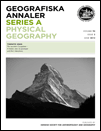
GEOGRAFISKA ANNALER SERIES A-PHYSICAL GEOGRAPHY
Charting New Paths in Earth and Planetary SciencesGeografiska Annaler Series A-Physical Geography, published by Taylor & Francis Ltd, is a leading academic journal dedicated to the advancing field of physical geography. With a rich publication history spanning from 1979 to 2024, this journal stands out in its categories, being positioned in the Q2 quartile for both Geography, Planning and Development and Geology in 2023. The journal is recognized for its contribution to Earth and Planetary Sciences, evidenced by its Scopus rankings placing it in the top 31% and 32% of its respective disciplines. Belonging to a distinguished publisher from the United Kingdom, it provides a vital platform for researchers, professionals, and students to disseminate and engage with cutting-edge research. While the journal does not currently offer open access, it remains a pivotal resource for those involved in the study of physical geography, offering insights that enhance our understanding of the Earth's processes and environments.

Geografia Fisica e Dinamica Quaternaria
Advancing Knowledge of Earth-Surface ProcessesGeografia Fisica e Dinamica Quaternaria is a leading Italian journal dedicated to the exploration and understanding of Earth-surface processes through the lens of Quaternary geology. Published by the COMITATO GLACIOLOGICO ITALIANO, this journal has been a key player in the dissemination of pivotal research since 1978, significantly contributing to the field of Earth and Planetary Sciences. With an ISSN of 0391-9838 and E-ISSN 1724-4781, it serves as an essential platform for scholars and practitioners, offering insights into the dynamics of climate change, glacial processes, and landscape evolution. Although categorized in the Q3 quartile for Earth-surface processes in 2023, the journal continues to foster a robust academic community, emphasizing the significance of interdisciplinary approaches in understanding our planet's past and present. Access options may vary, presenting potential considerations for readers. By bridging theoretical research with practical implications, Geografia Fisica e Dinamica Quaternaria remains an indispensable resource for advancing knowledge and promoting dialogue within the scientific community.
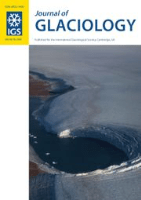
JOURNAL OF GLACIOLOGY
Exploring the intricate relationships of glaciers and Earth's systems.JOURNAL OF GLACIOLOGY, published by Cambridge University Press, is a leading open-access journal dedicated to advancing the scientific study of glaciers and ice sheets, with a particular focus on their interactions within Earth’s systems. With an ISSN of 0022-1430 and E-ISSN of 1727-5652, this journal has established itself as an influential platform since its inception, currently ranked in the Q1 category of Earth-Surface Processes in 2023. The journal is based in the United Kingdom and has witnessed a convergence of pivotal research from various periods spanning from 1977 through to 2024. It enjoys a commendable Scopus rank of #29 out of 179 in Earth and Planetary Sciences, affirming its impact with an impressive 84th percentile. The open-access model adopted since 2016 enhances its accessibility, enabling a wider audience of researchers, students, and professionals to engage with high-quality research on glaciology, climate change, and environmental systems. By fostering interdisciplinary dialogue and disseminating innovative findings, the JOURNAL OF GLACIOLOGY plays a crucial role in enhancing our understanding of glacial dynamics and their significance in our rapidly changing world.
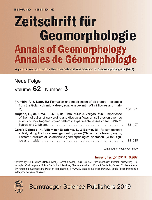
ZEITSCHRIFT FUR GEOMORPHOLOGIE
Shaping the Future of Earth Sciences Through Geomorphology.ZEITSCHRIFT FUR GEOMORPHOLOGIE is a prestigious journal dedicated to the field of geomorphology, published by GEBRUDER BORNTRAEGER from Germany. With the ISSN 0372-8854 and E-ISSN 1864-1687, this journal serves as a vital platform for researchers, professionals, and students interested in understanding the dynamic processes that shape our Earth’s surface. The journal has consistently maintained a solid academic reputation, achieving a Q3 ranking in key categories including Earth and Planetary Sciences (miscellaneous), Earth-Surface Processes, and Geography, Planning and Development as of 2023. This reflects its position within the global scientific community; ranked at #93 out of 179 in Earth-Surface Processes, contributing to crucial discussions surrounding environmental changes and landform evolution. Although ZEITSCHRIFT FUR GEOMORPHOLOGIE is not an Open Access publication, it offers extensive insights and findings from converged years spanning from 1979 to 2019 and again from 2021 to 2022. The journal is located at Johannesstr 3A, D-70176 Stuttgart, Germany, and plays a pivotal role in advancing geomorphological research that impacts natural sciences, ecology, and planning strategies worldwide.

GEOMORPHOLOGY
Shaping Knowledge in Geomorphology.GEOMORPHOLOGY, published by Elsevier, is a leading journal that focuses on the study of landforms, along with the processes that shape them. Established in 1984, the journal has evolved to become an essential resource for researchers in the field of Earth-Surface Processes, currently holding a prestigious Q1 quartile ranking and occupying the 17th position out of 179 journals in Scopus, placing it within the top 10% of publications in this domain. This impact underscores its significance in advancing understanding within geosciences, providing a platform for both foundational and innovative research. GEOMORPHOLOGY publishes a diverse array of articles, from empirical studies to theoretical advancements, ensuring accessibility for a broad audience of students, professionals, and academics alike. With its commitment to high-quality research, this journal serves as a critical reference point for ongoing developments and discoveries in geomorphology.